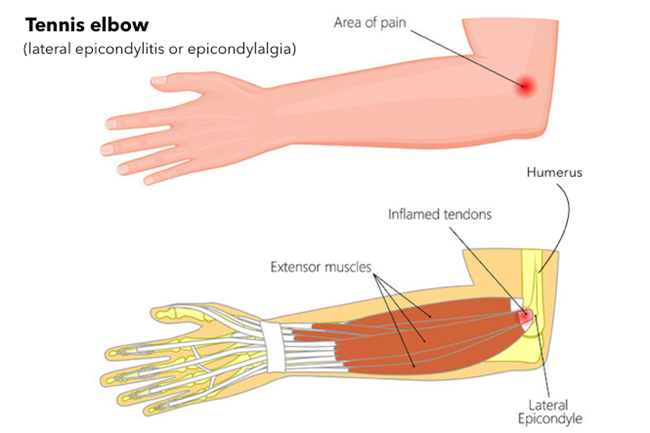
Tennis elbow treatment is available in two forms – conservative and surgical
A non-surgical tennis elbow treatment helps to avoid repetitive motions and positions which aggravate the pain. Icing, cortisone and oral anti-inflammatories can help reduce swelling and reduce pain. Surgery can sometimes be indicated if the condition worsens or if symptoms are severe. Wrist splints and elbow braces can also be used to relieve the strain on the affected tendons.
Conservative Treatment for Tennis Elbow includes the use of ice and other techniques to reduce swelling, reduce pain, and speed up healing. This may include rest and a small dose of over-the-counter pain relievers. If the injury hasn't improved with non-surgical treatment, it may be time for surgery.
Surgical treatment for tennis elbow involves removing part of the tendon damaged by the injury. This reduces inflammation and provides some relief. Arthroscopic surgery removes the tendon from the bone and reshapes it so it doesn't cause inflammation or friction with the surrounding tissue.
It is important to remember that not everyone who has had surgery will make a full recovery. Even if you have arthroscopic surgery, there is a chance that you will return to movement and some people will have problems with their hands again. For this reason, doctors will not recommend this treatment to everyone. If you are concerned about possible complications after surgery, talk to your doctor.
Non-surgical treatment for tennis elbow can be much more beneficial than surgery. If you don't feel as much pain or discomfort as you used to, you can increase your daily activities, such as stretching or swimming. If you would like to try using an ice pack or heat pack on the affected area, it is recommended that you try using them in combination with non-surgical treatments. You can also increase your stretching exercises.
In addition to improving your activity and reducing symptoms, you can also strengthen your muscles through regular training at the tennis club. This can help prevent future pain from occurring as it can help you get your range of motion back.

If you continue to follow these non-surgical tennis elbow treatments, you are likely to experience a decrease in the frequency of tennis elbow attacks. Not only will this make tennis a more fun sport, but it will also improve your fitness and prevent any other tendon-related injuries from developing in the future.
Take good care of yourself and your wrist by exercising, avoiding repetitive motions and strengthening the muscles around the elbow. Remember that you can prevent recurrence of pain by keeping your elbows as relaxed and supple as possible.
Before taking up tennis elbow treatment, talk to your doctor about your condition. Your doctor may recommend you to take a prescribed course of painkillers. He or she may also advise you to wear protective gloves while playing.
If you feel that your condition is worse than the one you had when you first began, your doctor may prescribe anti-inflammatory drugs. These can be used to treat the inflammation and help prevent further damage, but should not be taken for longer than four weeks at a time.
If your condition continues to recur, you may be advised to start on physical therapy. In physical therapy, a physiotherapist will teach you exercises, stretches and exercises that can help you achieve optimum flexibility and strength.
The duration of your tennis elbow treatment will depend on the severity of your condition and the extent of your injury. However, you should ensure that you continue your treatment for at least six months after the surgery. Also, you should be aware of the risks and complications associated with non-surgical treatment and decide if it is suitable for you.